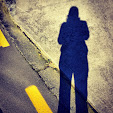Project Three
 |
| Final model |
 |
| This storyboard (as previously shown here) presents my initial development |
After this I went away from the idea of a container or box and focused on the lock. I devised a plan in Solidworks as seen here
 |
| Storyboard of movement for first version of model |
 |
| The lug involved a fairly simple design for a locking mechanism - though not simple enough |
And started working on making a prototype in MDF. The problem was that the size (as per the dimensions above) made the construction very difficult. I also made a model in pine wood to try and devise a way to make my curved lock work however it became apparent that the curved lock was too detailed (in that size) to build so I went back to the drawing board.
I adjusted the lock so that it incorporated wire into the catch mechanism...
 |
| Wire in sectioned version of final model |
 |
| Front face of final design |
 |
| drill-press, file for corner fillets, the iPhone curve - ha!, rubber section being made from piece of rubber window squeegee |
 |
| The evolution of the model |
 |
| 3-step movement of model |
High quality image of presentation drawing
 | ||
| My vellum/drafting film illustration hand-in - the drawing I had originally intended to hand in was left at home on hand in day |
Decal for presentation wallet:
 |
| This forms the bottom layer of the illustrations accompanying my model and is folded three ways so that the name appears on the front |
Summary: Two to five
sentences that explains the principles and ideas expressed in your work, and
reflect on the value of the skills and processes you learned in Project Three.
Inspired by the joint
that works the human jaw, this model was based on that joint's ability to first
slide out of its resting position, (which allows the up and down motion), then
rotate freely.
The lock position and
six black dots have been geometrically designed to provide the operation code.
The user must locate the
correct code or 'sweet' spot by placing the upper piece on the lower one (the
clue is in the two sets of three black dots and the shape of the central lug)
in order to ROTATE in an
anti-clockwise direction to a closed or LOCKED
position.
I have revisited the
skills I learnt last year in DSDN 104 by designing my model first in
Solidworks. Due to the initial intricacy of my design I was unable to finish it
by hand so the most important decision I needed to make was when to redesign to
suit my resources. I really wanted to create an aesthetically pleasing piece
which I am proud to say I achieved.
Movements
Upper
piece:
Rotate/Pivot
Lower piece: Lock/Catch
Materials Used
Upper and lower wood shapes: bass
wood;
Lock: aluminium wire, Sculpy
and rubber (sandwiched between the circle and ‘D’ shaped Sculpy pieces);
Six black circles:
inlaid Sculpy.


No comments:
Post a Comment